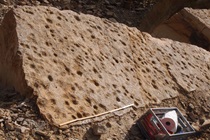 A team of Polish scientists from the Polish Geological Institute – National Research Institute (Piotr Szrek, Katarzyna Grygorczyk, Sylwester Salwa, Patrycja Dworczak) and the Jagiellonian University (Alfred Uchman) has made a discovery that rewrites the history of evolution. Researchers have identified the world's oldest evidence of vertebrates moving on land.
A team of Polish scientists from the Polish Geological Institute – National Research Institute (Piotr Szrek, Katarzyna Grygorczyk, Sylwester Salwa, Patrycja Dworczak) and the Jagiellonian University (Alfred Uchman) has made a discovery that rewrites the history of evolution. Researchers have identified the world's oldest evidence of vertebrates moving on land.
The researchers have identified the world's oldest traces of vertebrates on land. Unique fossils, dating back over 400 million years, prove that the first attempts to leave the water were made by dipnoans (Dipnoi) – about 10 million years earlier than the ultimate winners of this race, the tetrapods.
A revolution in palaeontology: Crawling pioneers.
This discovery, published in the prestigious journal Scientific Reports, sheds new light on a key moment in the history of life – the invasion of vertebrates onto land. The traces were left by dipnoans, a group of fish that are the sister group of all land vertebrates, including us humans. The tracks, named Reptanichnus acutori (Latin for ‘crawling pioneer’), are not just fin prints. They are a complex record of movement, documenting the dragging of the body, impressions of the torso, tail and even the snout, which the animal used to ‘anchor’ itself to the ground to pull the rest of its body up.

Surface with traces left by dipnoans. Seashore from over 400 million years ago (photo: P. Szrek).
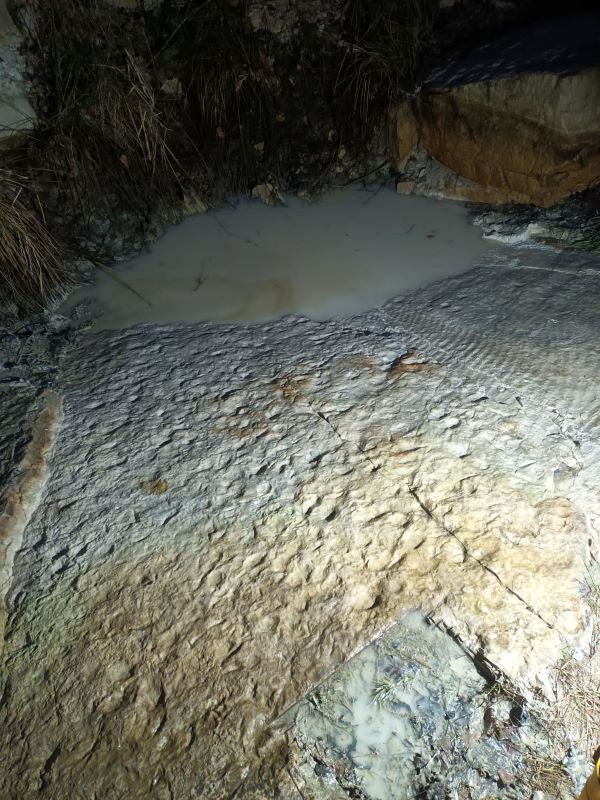
Seashore surface with traces of crawling dipnoans (photo: P. Szrek)
The discovery in the Świętokrzyskie Mountains proves that evolution tested various ways of adapting to life on land almost simultaneously and in at least two groups of animals. This find documents the earliest known stage of this adaptation in vertebrates.
Sensational discovery: were the first vertebrates ‘lefties’?
Analysis of the traces has revealed another extraordinary finding. It turns out that Devonian fish almost always stuck their snouts into the sediment, tilting them to the left. This suggests a dominance of the right hemisphere of the brain, which is the oldest known evidence of lateralisation (the equivalent of handedness) in vertebrates. What's more, this may mean that, evolutionarily speaking, ‘left-handedness’ appeared before the right-handedness that is dominant in humans today.
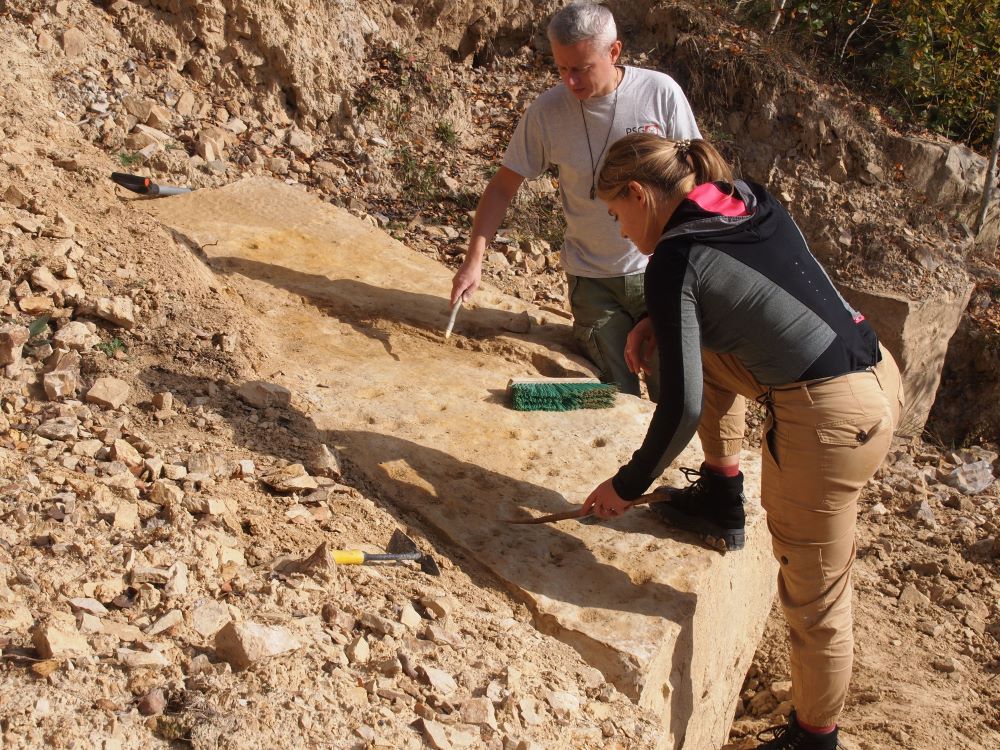
Fieldwork on documenting traces in Kopiec. Pictured: Piotr Szrek and Katarzyna Grygorczyk (photo: A. Uchman).
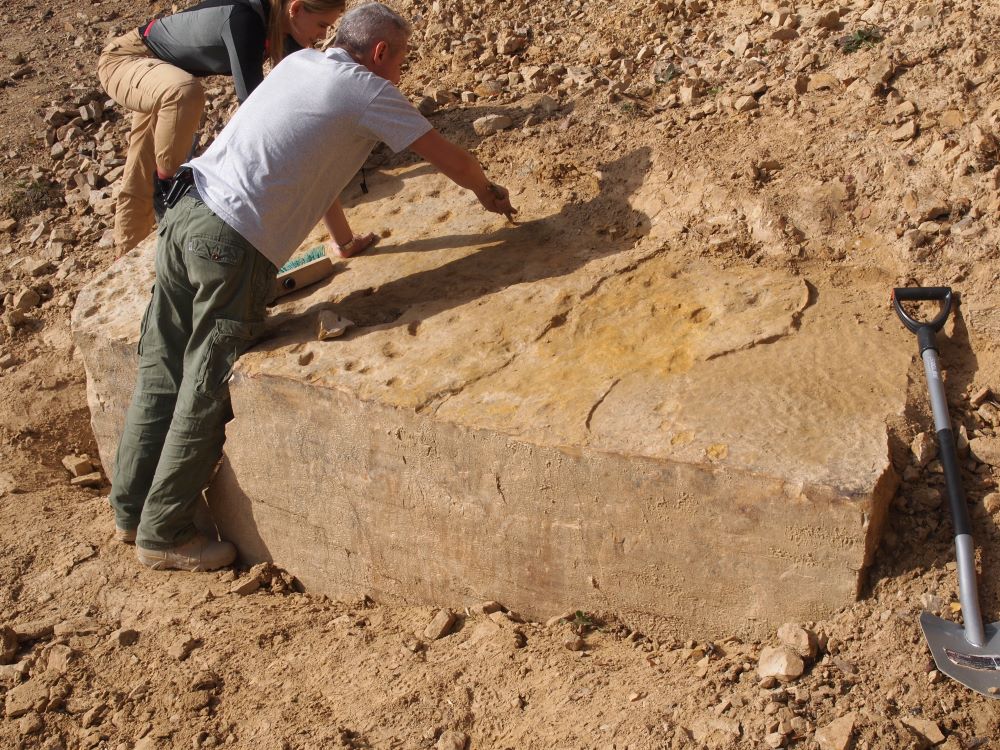
Fieldwork on documenting traces in Kopiec. Pictured: Piotr Szrek and Katarzyna Grygorczyk (photo: A. Uchman).
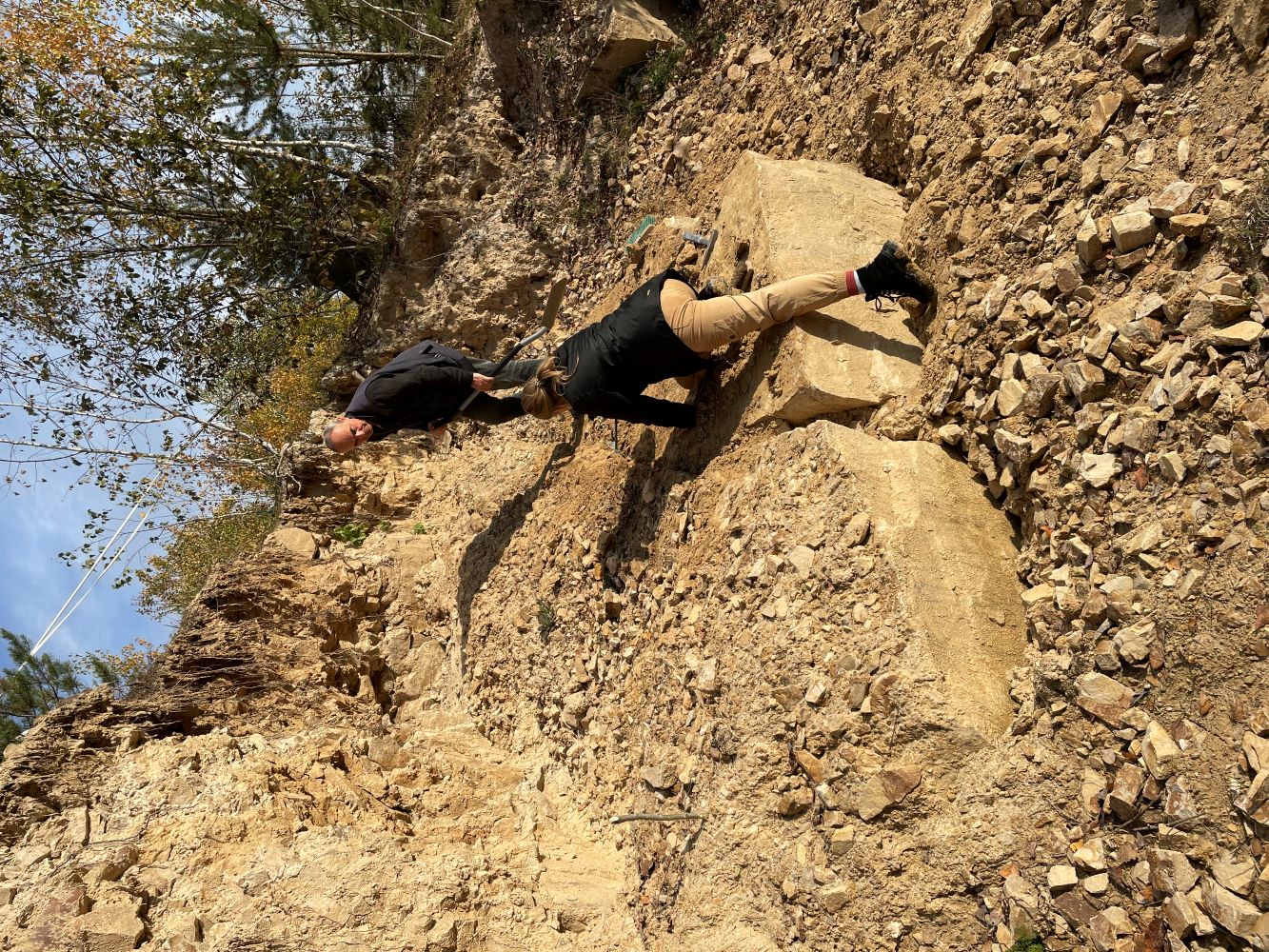
Fieldwork on documenting traces in Kopiec. Pictured: Piotr Szrek and Katarzyna Grygorczyk (photo: A. Uchman).
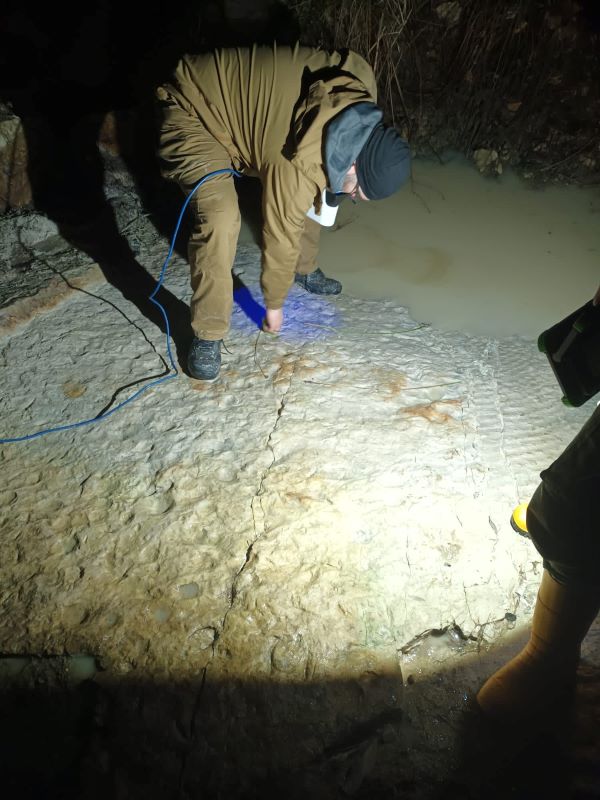
Scanning the surface with traces using a 3D scanner (photo: P. Szrek).
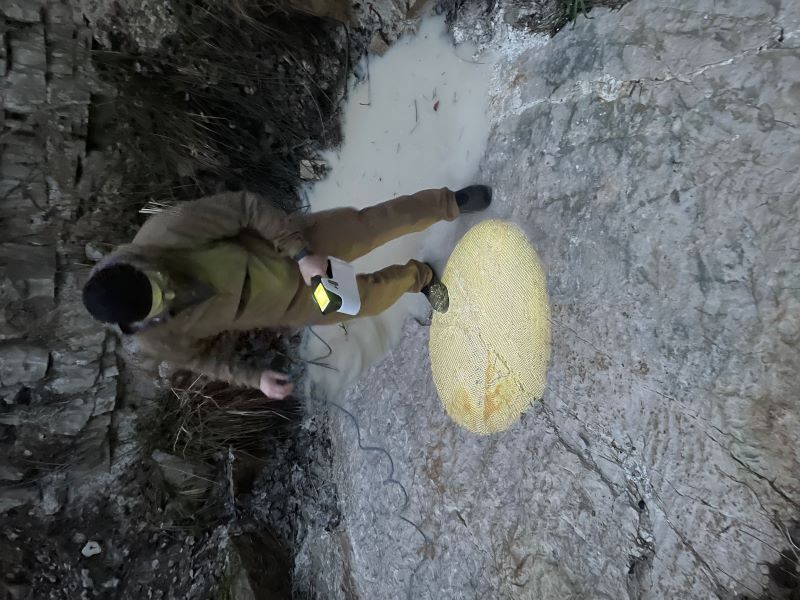
Scanning the surface with traces using a 3D scanner (photo: P. Szrek).
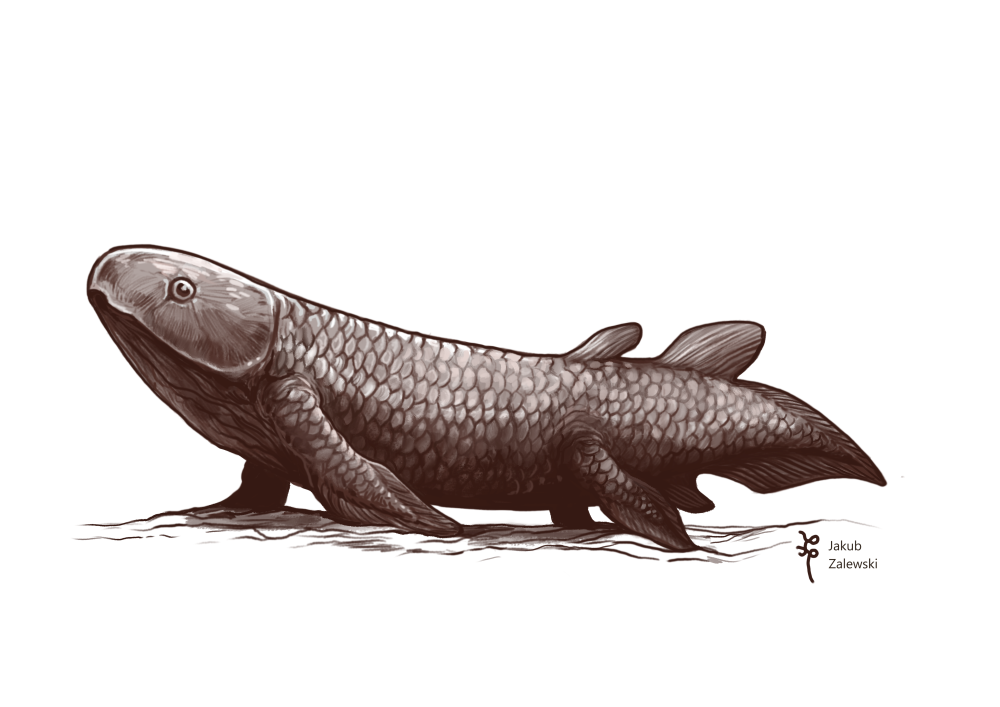
Reconstruction of the perpetrator of the traces Broomichnium ujazdensis (fig. J. Zalewski).
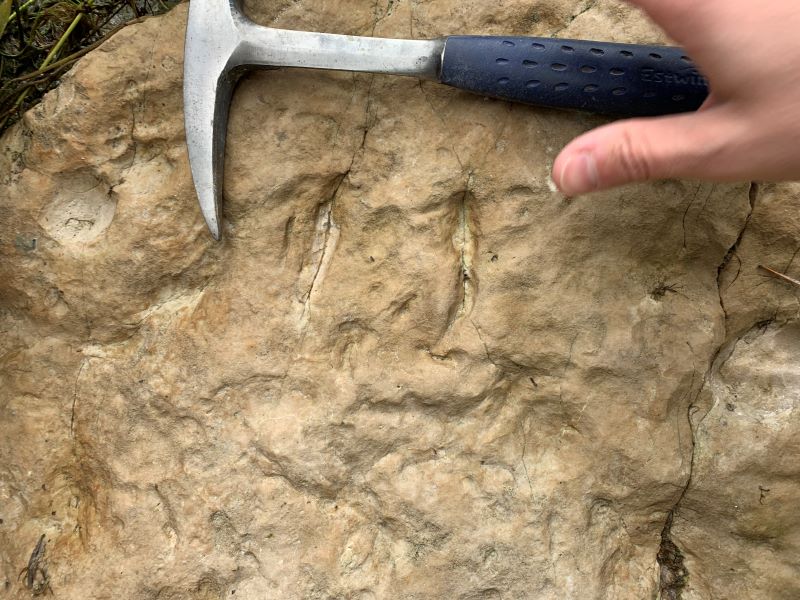
Resting trace of the dipnoan Broomichnium ujazdensis (photo: P. Szrek).
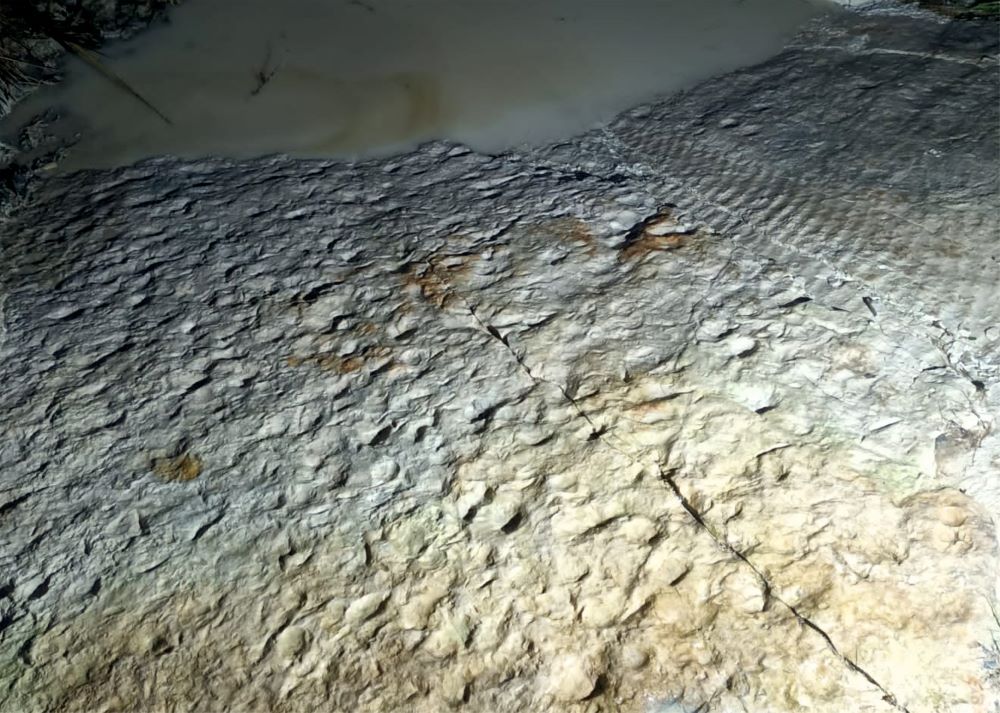
Seashore surface with traces of crawling dipnoans (photo: P. Szrek).
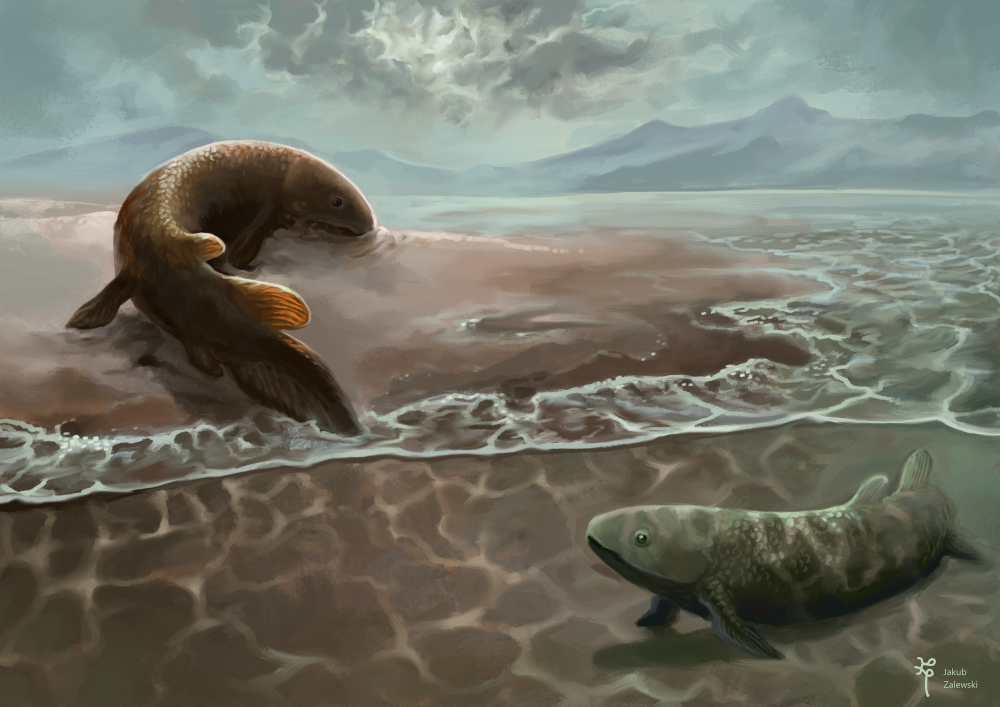
Reconstruction of the sea coast 400 million years ago (fig. J. Zalewski)
From Devonian mud to Krzyżtopór Castle.
The perfect condition of the 400-million-year-old fossils was possible thanks to a layer of volcanic ash (tuff) that almost immediately covered the traces, protecting them from destruction. Interestingly, the first finds of this type were discovered in the walls of the nearby Krzyżtopór Castle, which marked the beginning of many years of research in this area. Today, the surfaces with traces can be seen in old quarries near the village of Ujazd.
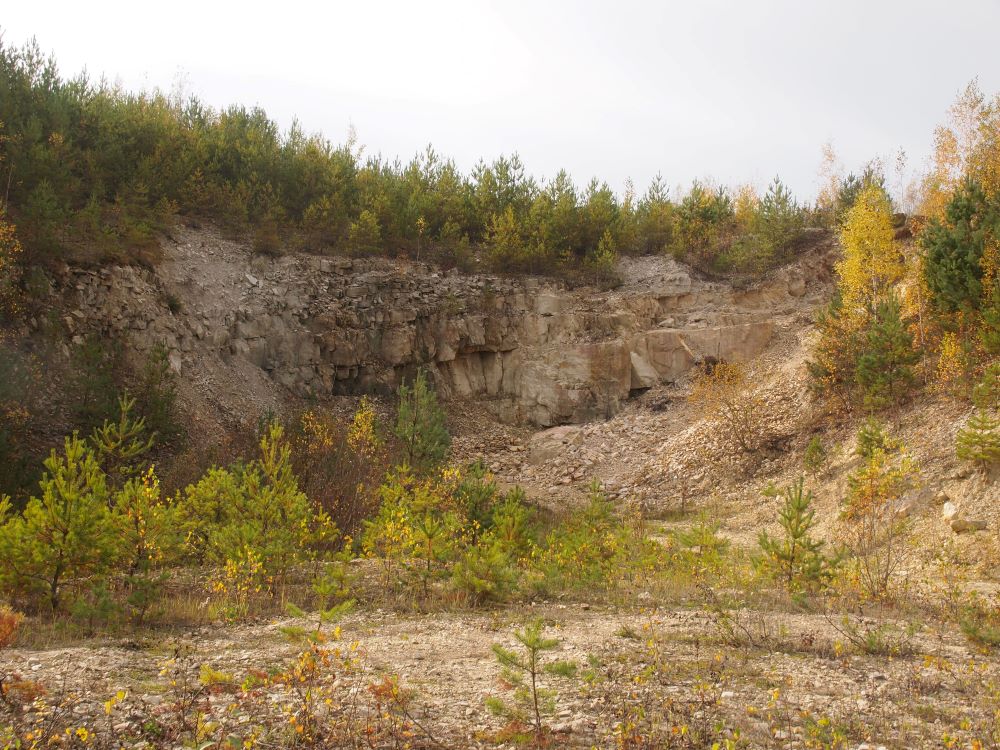
General view of the old quarry in Kopiec near Iwaniska (photo: P. Szrek).
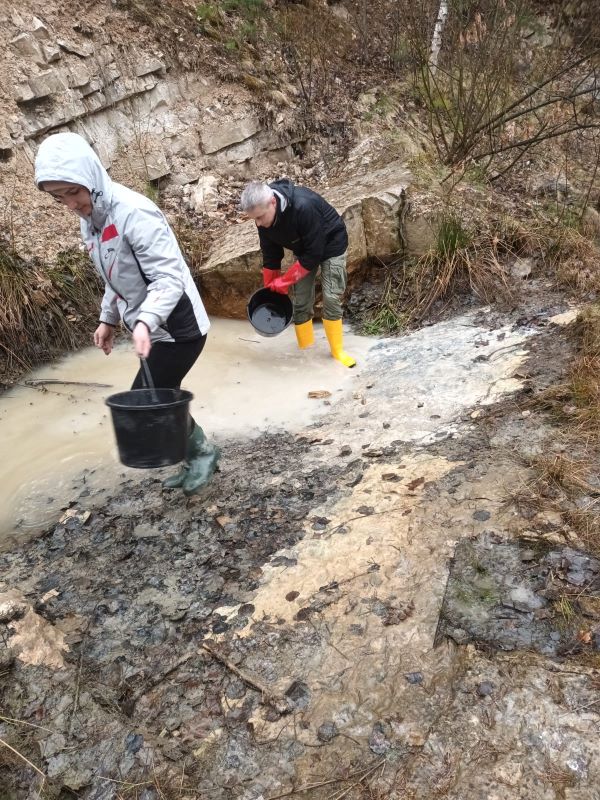
Drying the surface with traces before scientific documentation (photo: K. Grygorczyk).
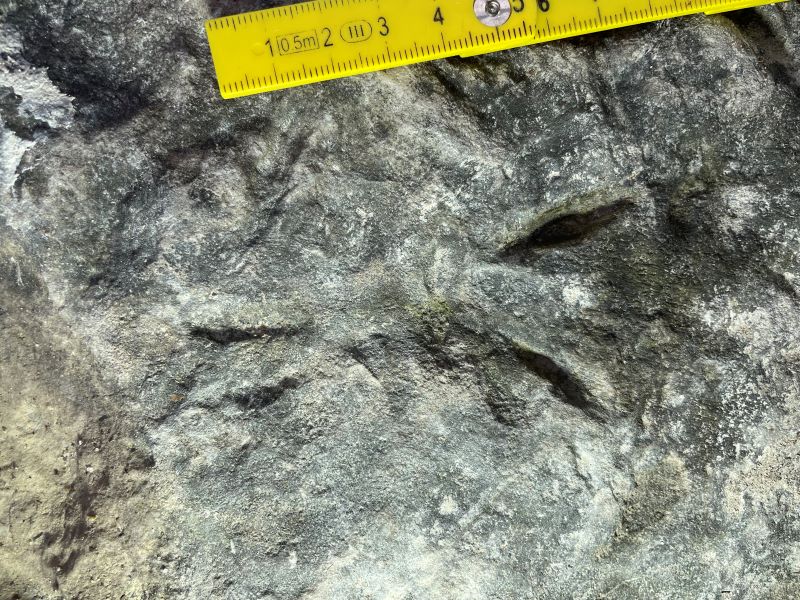
Resting trace of the dipnoan Broomichnium ujazdensis (photo: P. Szrek).
The credibility of the Polish scientists' interpretation has been confirmed by experiments with modern lungfish from Africa. These remarkable animals, often called ‘living fossils’, were found to leave almost identical traces to their Devonian ancestors.
The description of the find was published in the journal Scientific Reports:
Traces of dipnoan fish document the earliest adaptations of vertebrates to move on land | Scientific Reports
SZREK, P. UCHMAN, A, GRYGORCZYK, K., SALWA, S. & DWORCZAK, P. (in press). Traces of dipnoan fish document the earliest adaptations of vertebrates to move on land. Scientific Reports https://doi.org/10.1038/s41598-025-14541-8
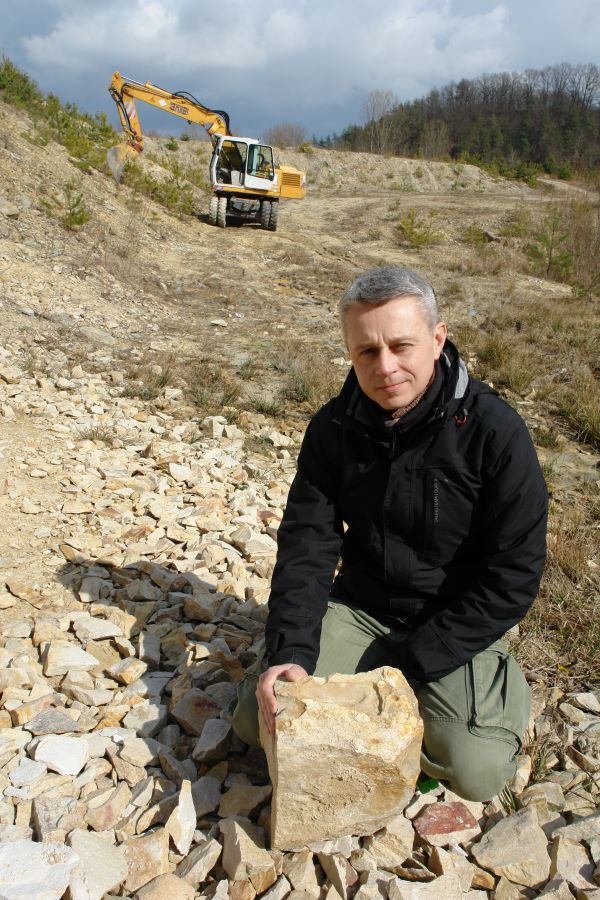
Project manager Piotr Szrek during the search for fossils in Kopiec (photo: G. Gierliński).














 PGI-NRI offer
PGI-NRI offer Mineral resources of Poland
Mineral resources of Poland  Oil and Gas in Poland
Oil and Gas in Poland 




 Subscribe to RSS Feed
Subscribe to RSS Feed